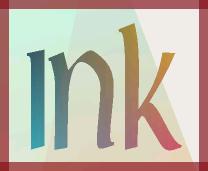|
December 2002
Since I always mean to get around to talking about monitors, printers, and how the two relate to each other, this month's as good a time as any. The complaint, and yes we all have it, is that I take that cool photo, get it on my hard drive, open my favorite image editor, and make it look "just right." Then when I print my oh so tweaked image out on my trusty inkjet, darn it, the thing just doesn't look the same at all! If all the math majors and physicists in the crowd will bear with my generalizations ... Well, it all has to do with color, and the differences in the way a computer monitor and a printer handle color. To start with, a computer monitor uses RGB beams (Red, Green, Blue) to display color, usually at say 3 channel/24bit color, while an inkjet printer uses CMYK (Cyan, Magenta, Yellow, blacK) with 4 channel/32bit color. The fundamental difference is that the colors we see on our computer monitor are projected from the computer tube to the screen and hence into our eyes, while inkjet printers are usually halftone printers where we see how the colored inks get absorbed into the paper and are then reflected back into our eyes. In fancy terms, monitors use projected light, while printers use reflected light. So, RGB isn't the same as CMYK. Actually RGB are called primary colors, and CMYK are called secondary colors. By blending various amounts of red, green and blue, a computer screen can display a color spectrum. When you look at a magazine, the sun (or indoor light) is shining on the paper; part of that light is absorbed into the paper while the rest of the light is reflected back to our eyes. In this color spectrum, Cyan absorbs red, Magenta absorbs green, and Yellow absorbs blue. Black is only used to provide the grey color so that we can afford printer cartridges! Anyhow, this 4 color printer model is what is called Four Color Process Printing -- the stuff the pros use for our favorite magazines. OK, one last little technical detail and we're ready to get practical. You might wonder, "well, where does RGB and CMYK meet already?" Thought you'd never ask. Where the primary colors overlap in the color spectrum is where the secondary colors are found. Thus the points of commonality. Armed with this basic knowledge about color, you can quickly see that there are very real differences in how we see color on a computer screen vs how we see color on a piece of paper. And just to totally confuse you, there are two basically different ways to print color on paper, the commercial (expensive) one called continuous tone printing, and the less expensive halftone method used by most inkjet printers. Needless to say, we'll concentrate on the halftone method, but the difference is that in continuous printing, each dot can be any color at all (say 16 million choices at 24 bit resolutions). Inkjet printers use halftone printing where each dot can be one of four colors -- remember CMYK? Halftoning really means a technique where the printer tries to cluster the dots to look like the one true color that you want. Some printers also vary the size of the dots to aid this illusion, and of course the neat 6 color printers use a broader variety of colors (6 vs 4) to come closer to the continuous tone method of printing. Now, let's pull together the lesson into how all this has to do with those photos we were talking about. As you can figure, those RGB dots (pixels) on the computer screen don't translate very easily into those halftone CMYK dots (dots) on a piece of paper. That's the fundamental job done by your image editing program together with the manufacturer's printer drivers. Obviously this is not a trivial thing to do. And as you blow up the size of the print compared to the original image size, all of these effects become magnified. Finally, it should also be evident by now why I make such a big deal about tweaking printer settings and using different types of paper to achieve different effects. Well, I hope this was somewhat useful, and next month we'll move to how all this works under OS/2 and with current inkjet printers/drivers. Of course if you think I should move on to hardware stuff, let me know -- Tony@SCOUG.com.
By day, Tony Butka is a bureaucrat for Los Angeles County. In his other life he lives in a loft surrounded by computers, printers, and a host of vinyl records.
P.O. Box 26904 Santa Ana, CA 92799-6904, USA Copyright 2002 the Southern California OS/2 User Group. ALL RIGHTS RESERVED. SCOUG, Warp Expo West, and Warpfest are trademarks of the Southern California OS/2 User Group. OS/2, Workplace Shell, and IBM are registered trademarks of International Business Machines Corporation. All other trademarks remain the property of their respective owners. |









